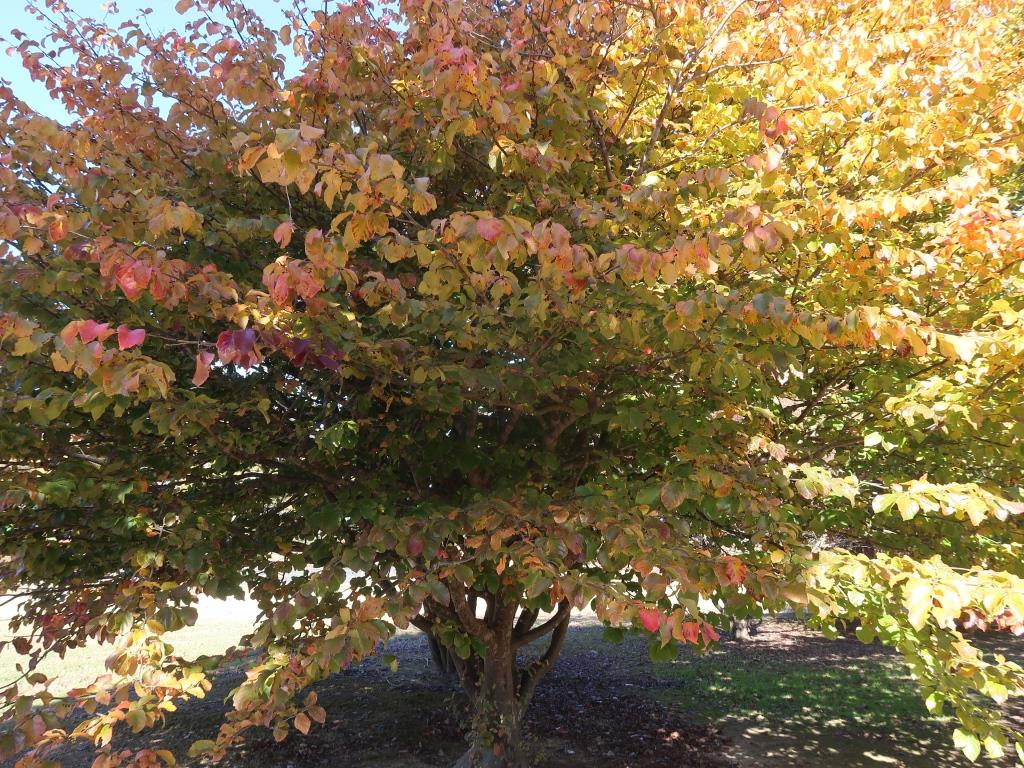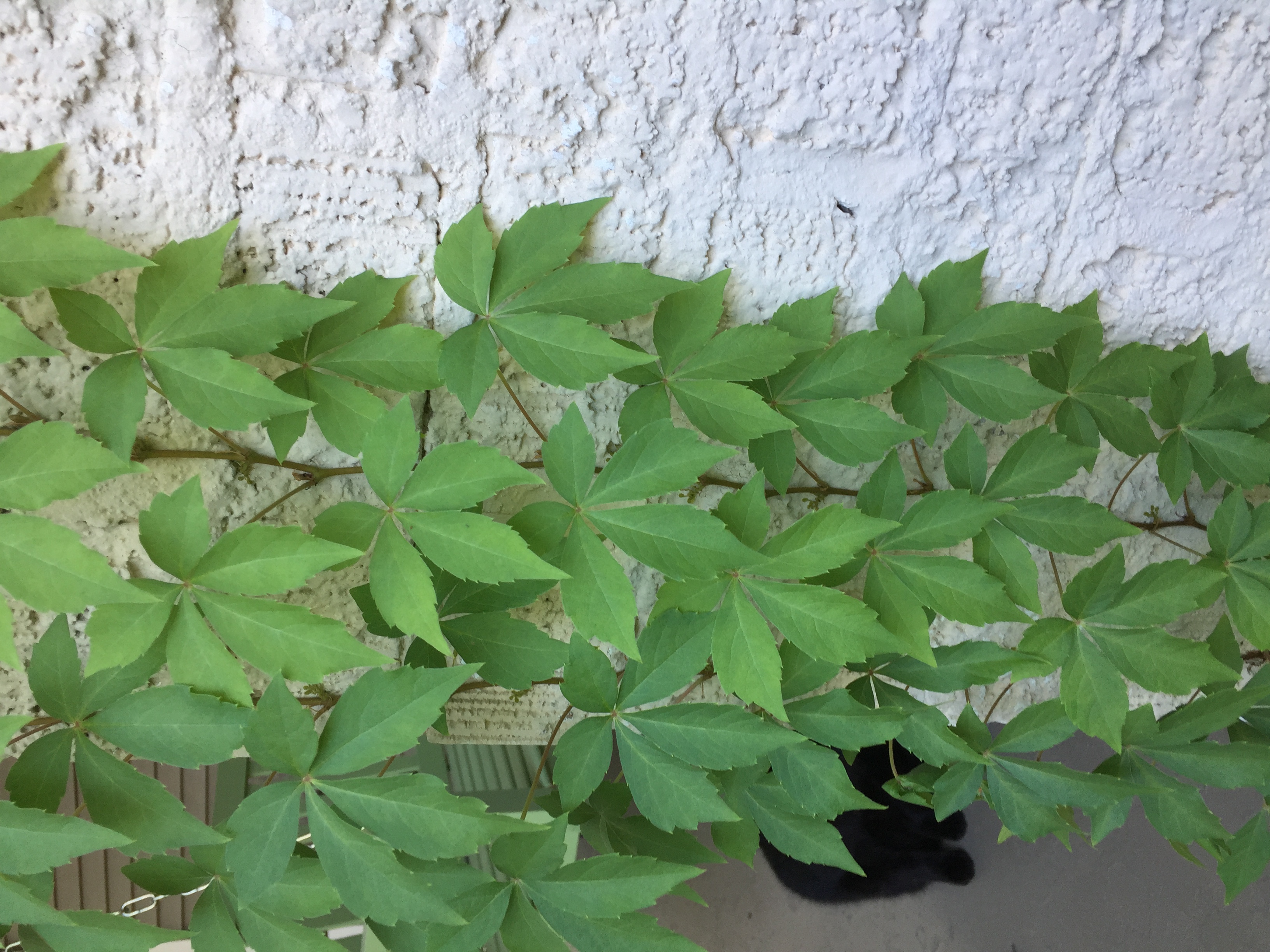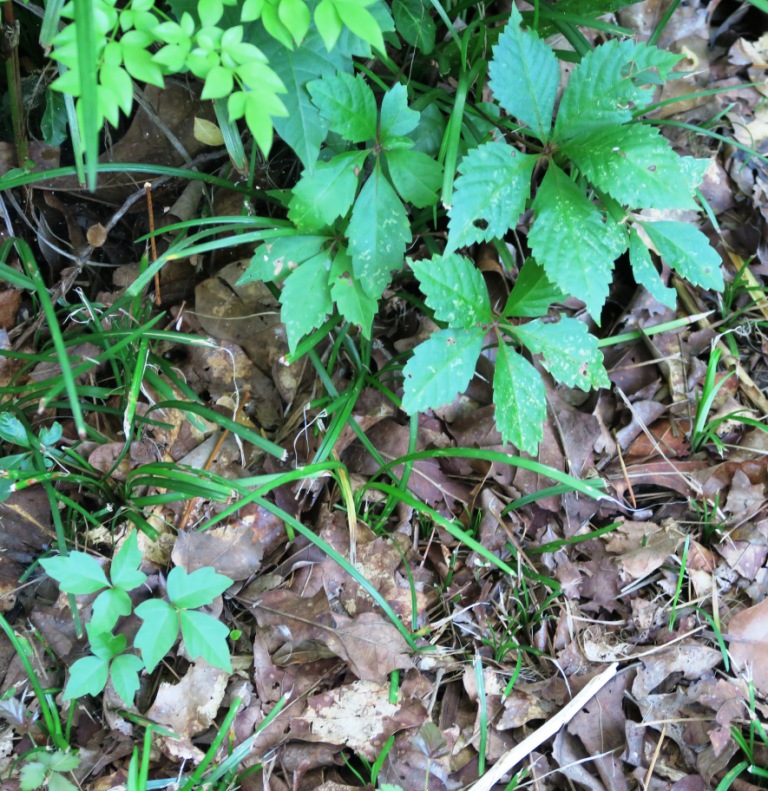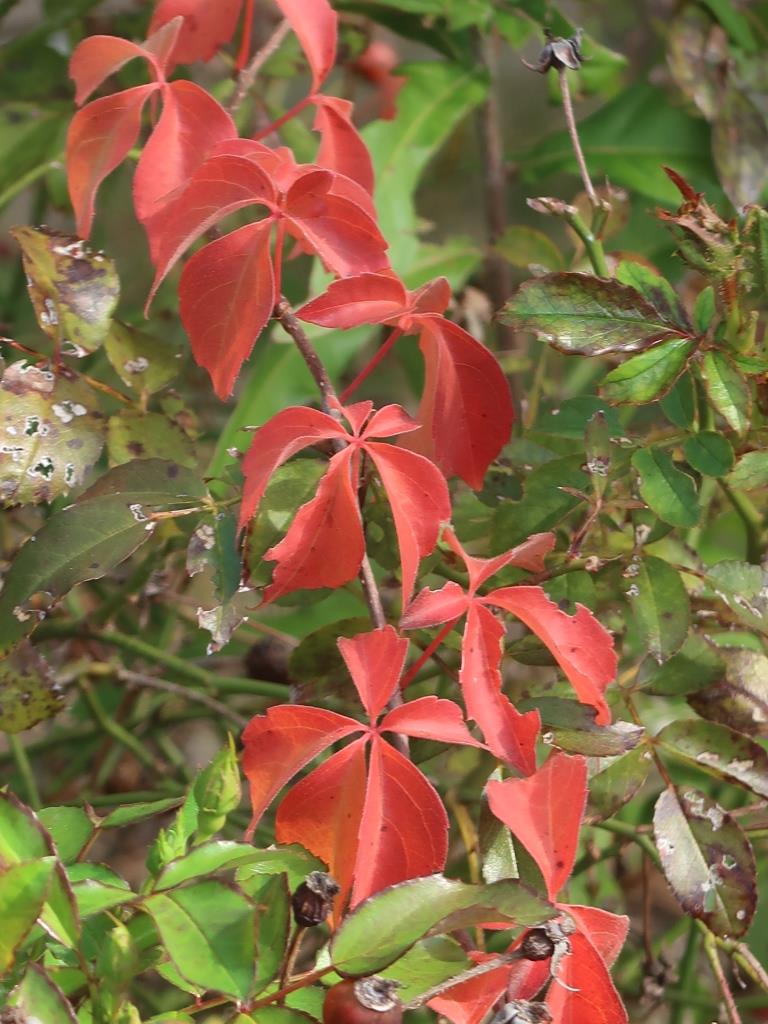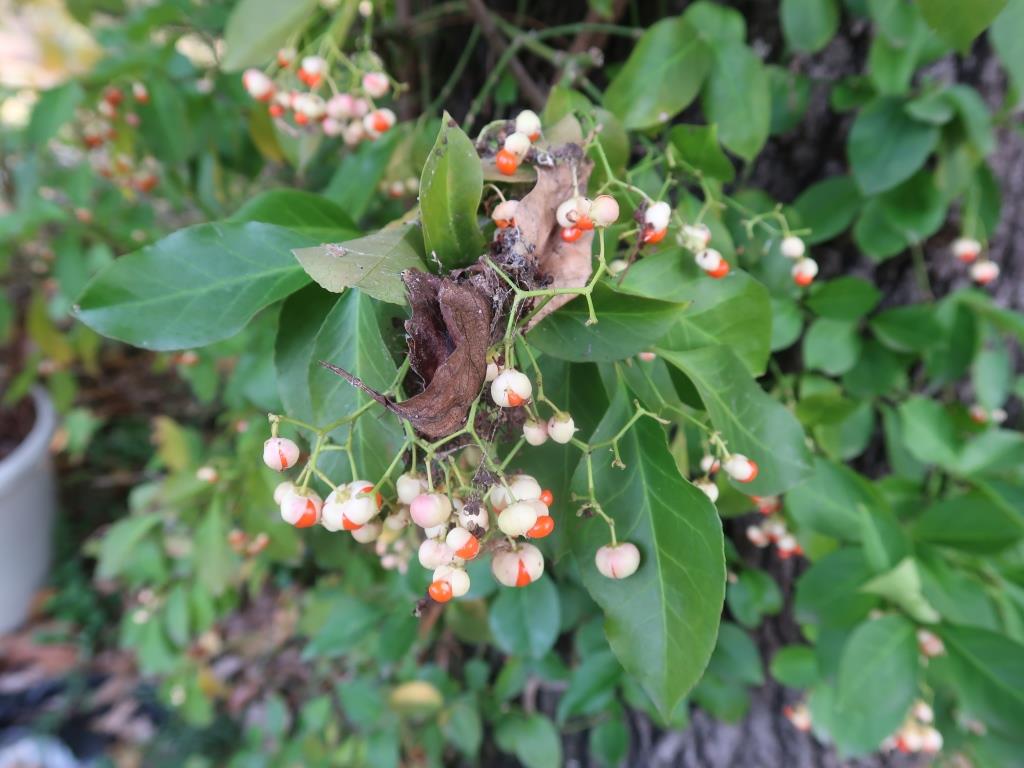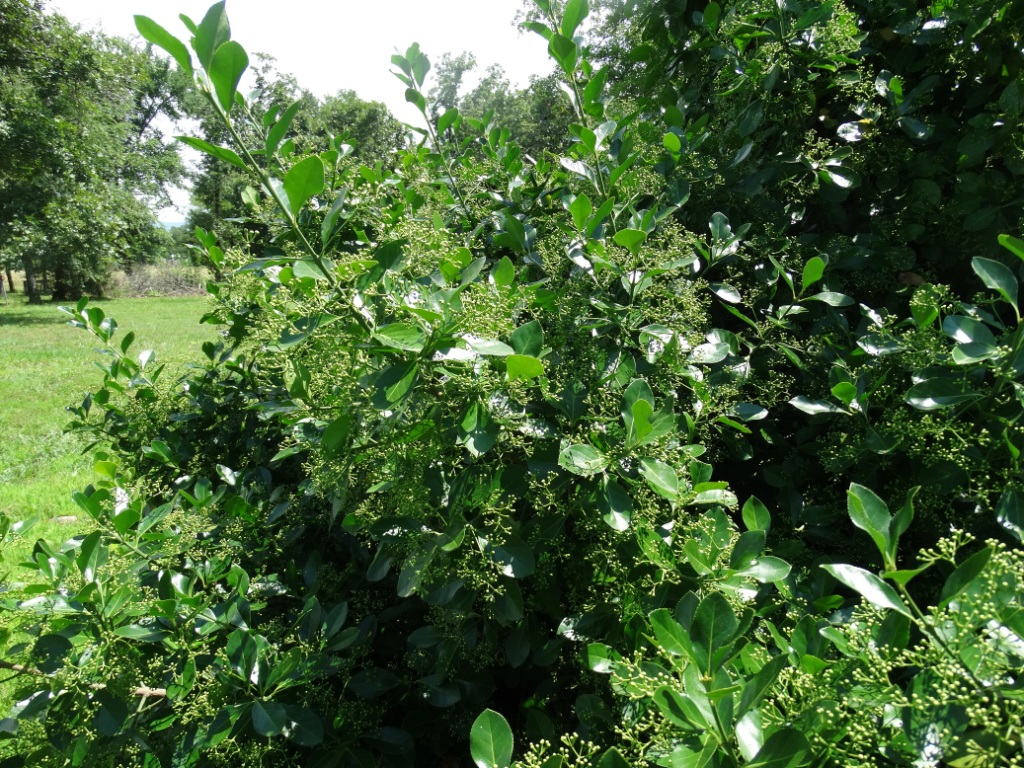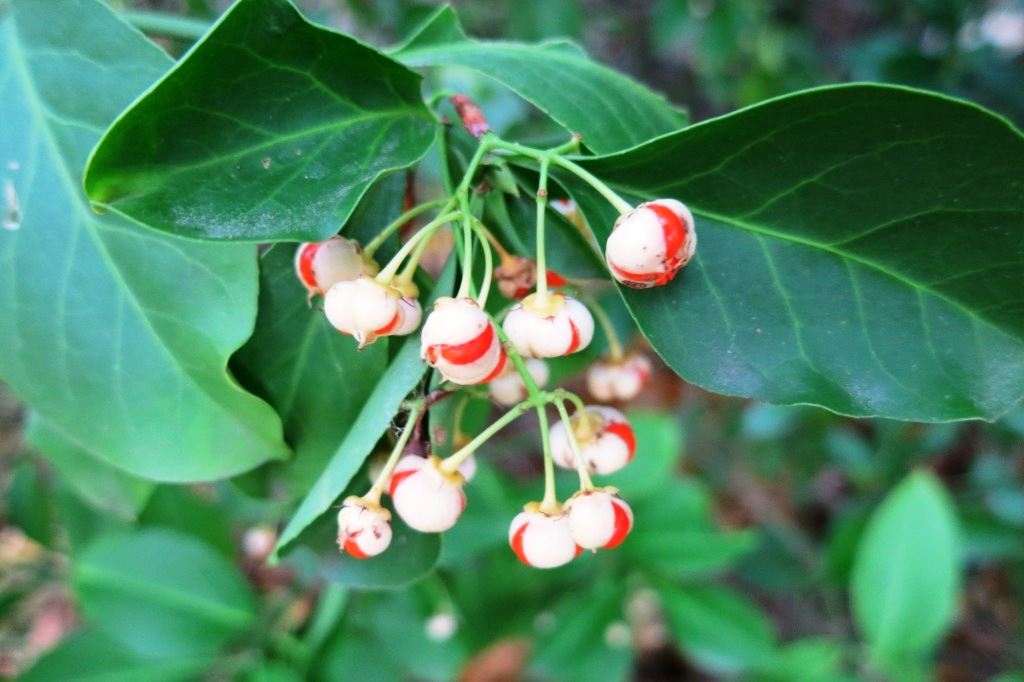This member of the witch hazel family is a tough tree, which tolerates heat, drought and poor soils. In the fall, Parrotia leaves turn yellow, mixed with shades of orange and red. As it ages, the bark exfoliates to reveal splotches of beige, cream, gray, and brown inner bark.
Virginia creeper - Parthenocissus quinquefolia is a native vine in the grape family.
It can grow as a groundcover or as a vine, quickly growing up a house or tree. As a young vine it has three leaflets reminiscent of poison ivy. A mature plant has five leaflets. One way to tell the difference between this and poison ivy is to look at leaflet attachment.
Virginia creeper leaflets are all attached at the same point, while poison ivy typically has two leaflets attached at the bottom with a small stem or petiole on the middle leaf. Both native vines are extremely aggressive in the landscape and are usually not a welcome addition.
The fall color, however, is quite impressive on both.
Manhattan Euonymus - Euonymus kiautschovicus 'Manhattan'.
It is not as aggressive as many vining euonymus, and it is highly resistant to euonymus scale. It has small greenish white flowers in the summer, followed by these interesting “bittersweet-like” fruits, which are quite attractive.
I saw some for sale this past week at Lowes-on clearance. It starts out as a bush, but it can be trained as an espalier. Mine is growing up the tree only about 8 feet, but it is somewhat bush beneath.

